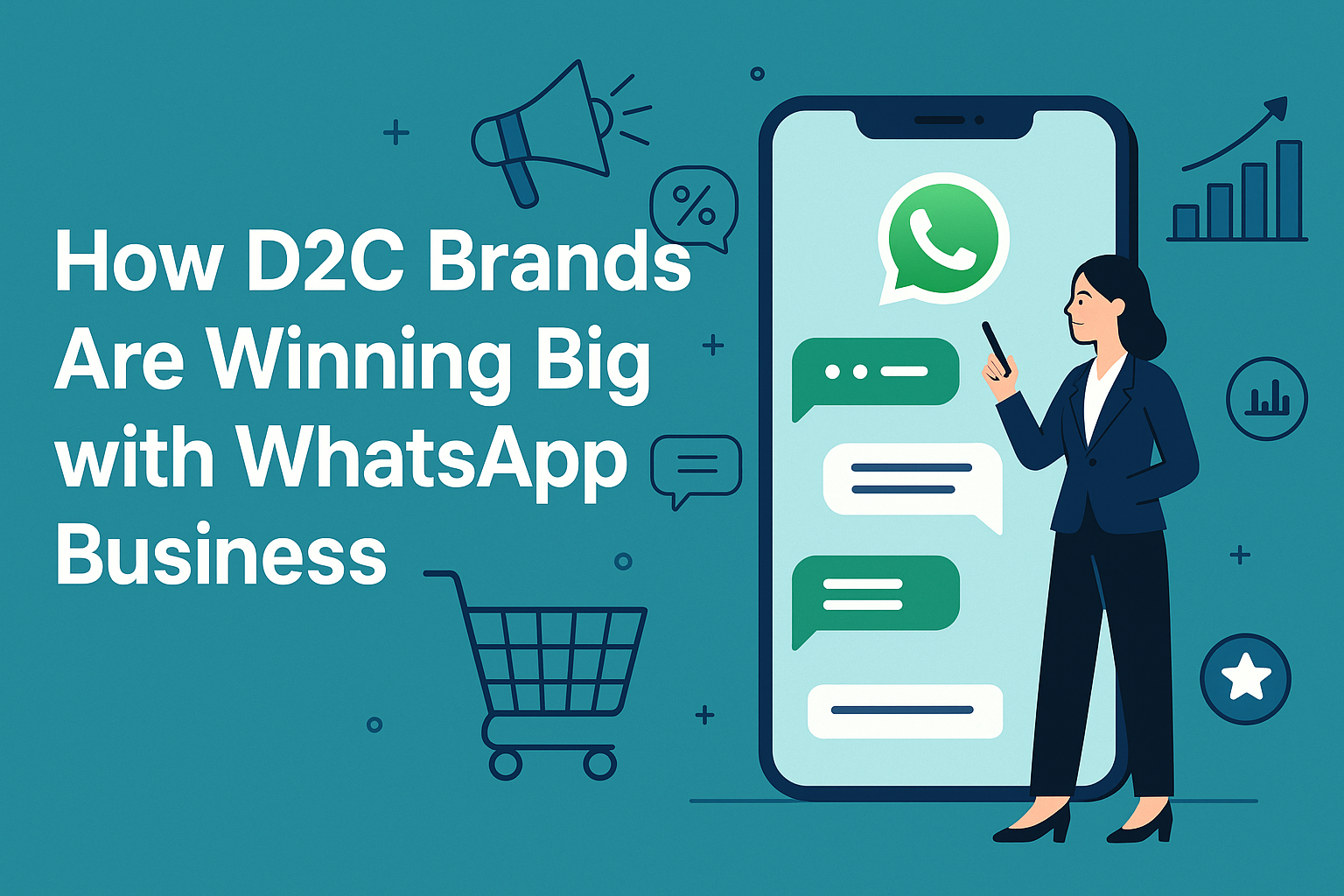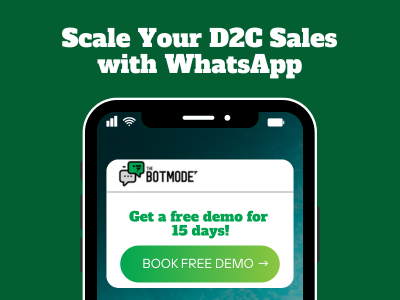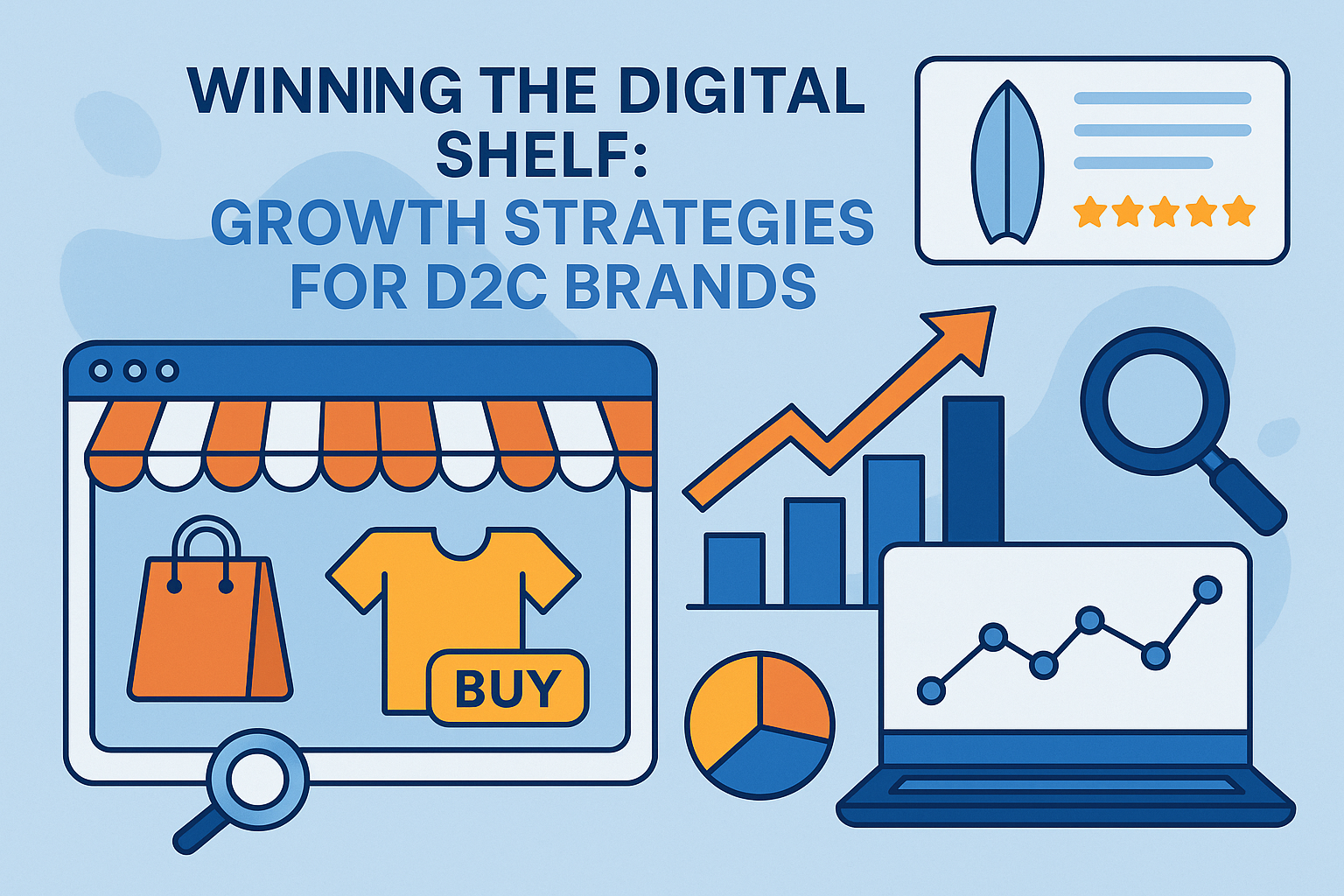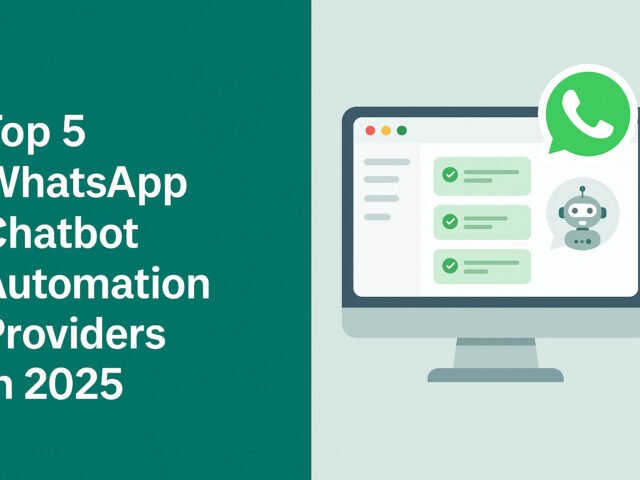Introduction
In a world where consumers expect instant, conversational experiences, D2C brands can no longer rely solely on email or social media pushes. Messaging platforms have become the new battleground — and WhatsApp Business is emerging as a powerhouse channel for direct-to-consumer engagement.
Today’s D2C brands are winning big by integrating WhatsApp Business into their tech stack, converting casual browsers into loyal customers through personalized chat flows. In this post, you’ll learn why WhatsApp works so well for D2C, how brands are using it strategically, real examples you can replicate, and how to measure success.
Why WhatsApp Business Is Ideal for D2C Brands
Before diving into tactics, it helps to understand why WhatsApp Business fits so well with the D2C model.
- Mass adoption + active engagement. WhatsApp is used by over 2 billion users globally, and in markets like India, it’s a daily habit. That gives D2C brands access to customers where they already are.
- Higher open & response rates. Messages via WhatsApp enjoy much better visibility than email or SMS campaigns, especially when delivered as conversational notifications.
- Conversational UI reduces friction. Customers feel comfortable chatting, asking questions, getting clarifications — just like messaging a friend.
- Commerce-friendly features. WhatsApp Business (especially the API) supports catalogs, buttons, rich media, automation templates, and integrations with e‑commerce platforms.
- Scalable support + automation. With multi-agent access, chatbots, routing, and workflows, you can support thousands of concurrent conversations.
These benefits align strongly with D2C needs: acquiring, converting, and retaining consumers directly — with lower friction, lower cost, and more control.
Core Strategies D2C Brands Use to Win via WhatsApp Business
Let’s explore the strategic levers top D2C brands pull via WhatsApp Business to drive growth:
1. Lead Generation & Opt‑In Messaging
- Always require opt‑in. Privacy, trust, and compliance depend on getting explicit opt‑in from users (via website widgets, QR codes, popups, click-to-WhatsApp ads).
- Welcome flows & drip sequences. Once someone opts in, initiate a friendly onboarding conversation: brand story, product quiz, recommended items.
- Incentives to subscribe. Use discounts, content, early access, or loyalty perks to encourage opt‑ins.
2. Personalized Promotions & Recommendations
- Segmentation by behavior & purchase history. Use order data to create segments (e.g. “frequent buyers,” “first-time cart abandoners”) and send tailored offers.
- Cross-sell/upsell in chat. Suggest complementary products directly in the conversation.
- Limited-time deals or flash offers. WhatsApp’s immediacy makes urgency more effective.
3. Automated Workflows & Cart Recovery
- Abandoned cart reminders. Brands increasingly see better cart recovery rates via WhatsApp vs email. > “30% better cart recovery vs email campaigns” (as cited by early users)
- Order confirmations, shipping updates, delivery alerts. Automate updates throughout the customer journey to keep trust high.
- Re‑engagement drip campaigns. Trigger messages based on inactivity or milestone times.
4. Customer Support & Two‑Way Conversations
- Rule-based chatbots for FAQs. Handle common questions (returns, sizing, policies) instantly.
- Seamless escalation to human agents. When conversational logic fails, hand off to live support.
- Contextual context retention. Bots + agents retain conversation history for continuity.
5. WhatsApp Catalog & In‑Chat Shopping
- Display catalog items. Use product catalogs so users can browse within chat.
- Buttons / quick replies / “Buy Now” CTAs. Let users click directly.
- Minimal context switching. Reduce friction by avoiding forcing the user to leave the chat.
6. Retention, Loyalty & Feedback Loops
- Post‑purchase check-ins. Send care tips, usage ideas, or reorder suggestions.
- Ask for reviews or referrals. Use conversational prompts (e.g. “Loved it? Spread the love!”)
- Exclusive chat-only offers. Reward WhatsApp subscribers.
- Conversational NPS / surveys. Use interactive questions to garner feedback.
Real Examples & Case Studies
Seeing real brands succeed with WhatsApp helps turn theory into action:
- Timex (India): Scaled D2C conversions by integrating WhatsApp flows into their checkout and support system.
- Campus Sutra: Automated cart recovery, retargeting, and conversational campaigns to drive incremental revenue.
- Design Cart: Used WhatsApp catalog messaging plus chat-based order support to reduce abandoned sessions.
- A D2C brand using MCUBE: One fast-growing D2C brand improved communication flows by combining cloud telephony and WhatsApp API to enhance reach and customer interaction.
These brands show that even with incremental use of WhatsApp, D2C businesses can get outsized ROI when done smartly.
Measuring Success: Key Metrics & KPIs
To know whether your WhatsApp strategy is working, track:
| Metric | Why It Matters |
| Delivery Rate | Ensures messages reach the user |
| Open / Read Rate | Signals user engagement |
| Response Rate | Interaction is the core value |
| Conversion Rate (chat → sale) | Measures direct ROI |
| Recovery Lift | How many abandoned carts were saved |
| Average Order Value (AOV) uplift | Cross-sell / upsell effect |
| Repeat Purchase Rate / CLV | Long-term loyalty effect |
| Customer Satisfaction / Resolution Time | Support quality indicator |
Monitor these over time, test variations, and iterate your flows.
Best Practices & Pitfalls to Avoid
To maximize your WhatsApp Business success, keep these in mind:
- Always honor opt-in & allow easy opt-out. Abuse leads to blacklisting.
- Avoid spamming. Frequency matters. Keep message flow relevant and spaced.
- Balance automation + human touch. Bots handle scale; humans preserve brand tone.
- Use high-quality visuals & concise messages. WhatsApp is visual + conversational.
- Test sending times, message formats, CTAs. Use A/B tests.
- Keep flows simple. Complex journeys can confuse users.
- Maintain compliance locally. Check data privacy, message policy, platform rules.
Implementation Roadmap for D2C Brands
Here’s a phased roadmap you can adapt for your D2C brand:
- Pilot Phase
- Set up WhatsApp Business / API connection
- Launch basic notifications (order, delivery)
- Gather opt-ins via site widgets, QR, ads
- Set up WhatsApp Business / API connection
- Automation & Core Flows
- Build cart recovery, welcome flows, FAQ bot
- Segment users & send simple promos
- Build cart recovery, welcome flows, FAQ bot
- Personalization & Commerce
- Integrate catalog & “buy in chat” features
- Use recommendation engines for cross-sell/upsell
- Integrate catalog & “buy in chat” features
- Retention & Loyalty
- Post‑purchase check-ins, feedback, exclusive deals
- Re‑engagement campaigns
- Post‑purchase check-ins, feedback, exclusive deals
- Scale & Optimize
- Iterate based on metrics
- Expand agent capacity, deeper integrations
- Test advanced flows (e.g. quiz-based selling, AI suggestions)
- Iterate based on metrics
Platforms you might explore include WhatsApp Business API platforms and automation providers tailored to D2C — such as TheBotMode (featured for D2C growth), Interakt, WATI, LimeChat, etc.
Conclusion
WhatsApp Business offers D2C brands a powerful lever to convert, retain, and delight customers — all through conversational, low-friction interaction. The brands winning big are those that start with simple flows, iterate based on metrics, and always keep the user experience front and center.
FAQs
What is WhatsApp Business?
It’s a business-specific version of WhatsApp that allows brands to send messages, share product catalogs, and support customers using automated and personalized chat.
Why should D2C brands use WhatsApp Business?
Because it helps drive more engagement, recover abandoned carts, provide faster support, and boost sales through direct conversations.
Can I sell directly through WhatsApp Business?
Yes, with features like product catalogs and “Buy Now” buttons, customers can browse and shop without leaving the app.
How do I start using WhatsApp Business for my D2C brand?
Start by downloading the app or integrating the API, collect customer opt-ins, and set up automated flows for sales and support.

















